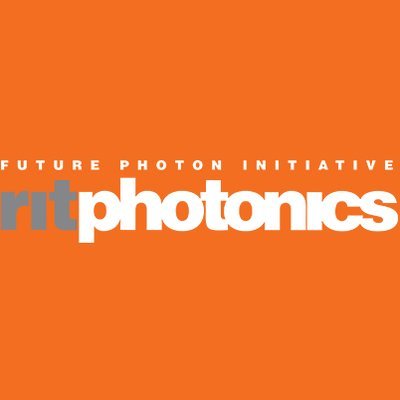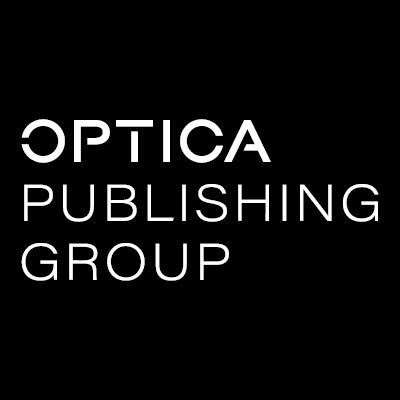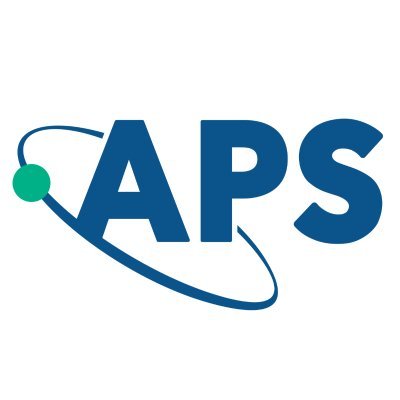
RIT Photonics
@RITphotonics
Followers
1K
Following
5K
Media
984
Statuses
3K
The Future Photon Initiative is the face of photonics at the Rochester Institute of Technology
Rochester, NY | Henrietta, NY
Joined September 2016
Researchers from @ETH_en created and precisely measured ultra-short, stable light pulses which they then used to perform X-ray absorption spectroscopy to observe ultrafast phenomena with the ultimate temporal resolution https://t.co/g6MzAjdXDM
@NaturePhotonics
nature.com
Nature Photonics - Researchers demonstrate phase-stable sub-cycle self-compressed light transients, as well as their sampling down to half of an optical cycle, and determine their waveform phase...
0
0
0
Researchers from @kaistpr & @imperialcollege developed and demonstrated a new method to fully measure and understand complex nonlinear optical processes, which will help improve future photonic technologies https://t.co/ssKLtQEDJc
0
0
0
Researchers from @CUNY @UTAustin & @NIMS_PR created a nanostructure that made normally invisible excitons in a 2D material shine brightly, allowing them to be controlled with electricity and magnetism for potential use in advanced optical and sensing tech https://t.co/edHDWsllDp
0
0
0
Martin Anselm, professor and interim department head in @RITtigers College of Engineering Technology, is leading a comprehensive electronics-manufacturing workforce-development program for local veterans https://t.co/Dx40FcxLqh
rit.edu
RIT faculty members, Rochester Veterans Outreach Center, and local companies build a veterans workforce development program in electronics manufacturing.
0
0
0
Researchers from @AcSIR_India @CSIR_NPL @IMSIU_edu_sa @iiscbangalore & @RMIT improved a 2D film of MoS₂, introducing sulfur‐vacancy defects and shining visible light on it & allowing it to detect ammonia gas much more sensitively and quickly at room temp https://t.co/jzCpR1boW1
nature.com
Scientific Reports - Enhancement in hazardous gas detection capabilities of MoS2 monolayer-based devices through defect engineering and photonic activation
0
0
0
Researchers at Max Born Institute for Nonlinear Optics and Short Pulse Spectroscopy & Deutsches Elektronen-Snchrotron (DESY) made a lens that can focus extreme-UV light pulses, making them easier to use for high-precision experiments https://t.co/RiZAThwNU5
@NaturePhotonics
nature.com
Nature Photonics - A plasma lens capable of focusing broadband extreme-ultraviolet attosecond pulses is demonstrated.
0
0
0
Researchers from @Columbia & @Stanford created a chip that can monitor and stabilize its temperature to keep tiny optical resonators steady, reducing frequency drift and allowing stable operation of laser and frequency-comb systems https://t.co/1IAcH5VsS6
@NaturePhotonics
nature.com
Nature Photonics - Integrating a thin-film resistance thermometer above a high-Q SiN microresonator enables local temperature monitoring and active stabilization of its resonance wavelength. The...
0
1
2
Researchers from @Stanford created and controlled amplified quantum vacuum fluctuations, showing how tuning with micro-heaters can reveal and manipulate exotic light behaviors relevant to future quantum and optical technologies https://t.co/wcB88a7P3U
@SpringerNature @Nature
nature.com
Nature Photonics - The quantum noise of Kerr combs is found to exhibit oscillatory lattice dynamics through state transitions, with implications for squeezing and comb formation.
0
0
2
This past Friday, the @AstrophysicsRIT department at @RITtigers hosted its annual AST Jamboree — a showcase where students present their research progress & results. Congratulations to Edwin Alexani for earning the award for Best Talk in the senior category! @therealdonfiger
0
0
0
0
0
0
Yesterday, Dr. Don Figer delivered his keynote talk on Sensors and Detectors for Physical and Chemical Sciences at the CHIPS for Science conference, being held at @UTAustin. @therealdonfiger @NSF @RITscience
1
1
3
Via #OPG_OpticaQ: Multi-NARP laser driving scheme for multiplexed quantum networks https://t.co/PeYi0VCoL4
#QuantumCommunication #OpticalNetworks @DalhousieU @Columbia
0
3
10
Researchers from @Concordia improved tiny electrostatic actuators called comb drives to make them stronger, move farther, and stay compact for use in optical beam steering devices, boosting performance while correcting for fabrication errors. https://t.co/pg665ZCyFm
@Nature
nature.com
Microsystems & Nanoengineering - Angled electrode comb drives for enhanced actuator in silicon photonic applications
0
0
0
Researchers from @Princeton & @NCState made a film that converts low-energy light into higher-energy light more efficiently using surface plasmons on silver. This works with lower power and can integrate into an organic LED to produce bright white light https://t.co/9YV4TIzbFR
nature.com
Nature Photonics - Performance of solid-state triplet fusion upconversion films is enhanced by surface plasmons, intensity threshold is reduced by a factor of 17 and external quantum efficiency is...
0
2
3
New research suggests that dark matter’s distribution in the Milky Way’s center is organized like stars – advancing dark matter’s status as a potential source for excess gamma rays in the Milky Way’s core. Read the study in @PhysRevLett: https://t.co/VB7WgPZQN5
11
29
103
Dr. Bhattacharya & researchers from @AstrophysicsRIT proposed a new quantum heat engine that uses light with orbital angular momentum to control how energy is transferred within a Bose–Einstein condensate, allowing them to optimize the engine’s efficiency https://t.co/NL0VwFccuK
0
0
0
An Editors' Pick via #OPG_OPTCON: Femtosecond asymmetric multi-pulse shaping via spectral intensity modulation https://t.co/VVgJtfI7yj
#FemtosecondLasers #PhaseModulation @HamamatsuPhoton
0
7
11
Researchers from @OECU_official @tohoku_koudai & @riken_en developed a new crystal-based method that can detect extremely weak sub-terahertz signals at room temperature with much higher sensitivity than existing detectors https://t.co/AcwzAw8Cee
nature.com
Scientific Reports - Room-temperature ultrasensitive photon-level detection in the subterahertz frequency regime
0
0
0
Dr. Ben Zwickl brought his physics class to learn about photonics research within the labs of Center for Detectors and Future Photon Initiative researchers. Don Figer and Justin Gallagher guided two groups of students through the FPI and CfD headquarters and Figer's research lab
0
0
0
New breakthrough quantum algorithm published in @Nature today: Our Willow chip has achieved the first-ever verifiable quantum advantage. Willow ran the algorithm - which we’ve named Quantum Echoes - 13,000x faster than the best classical algorithm on one of the world's fastest
2K
8K
46K












